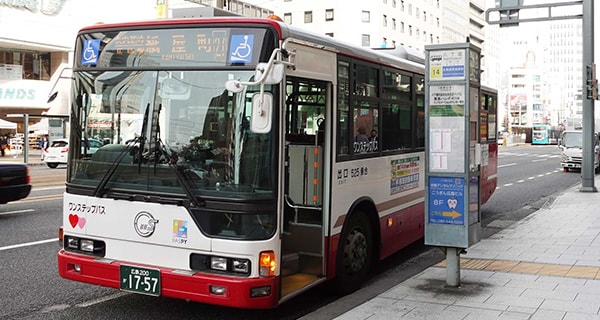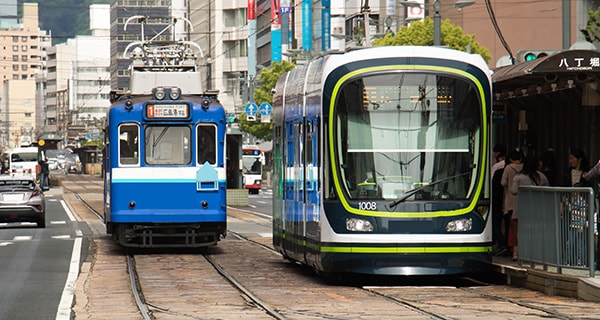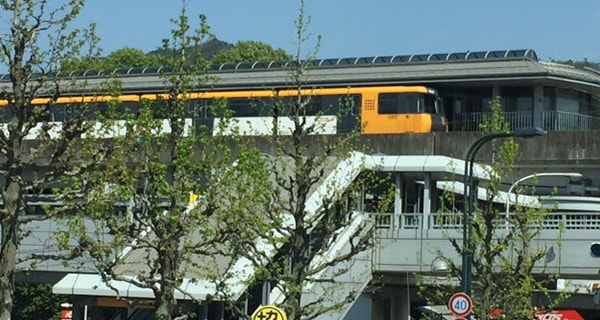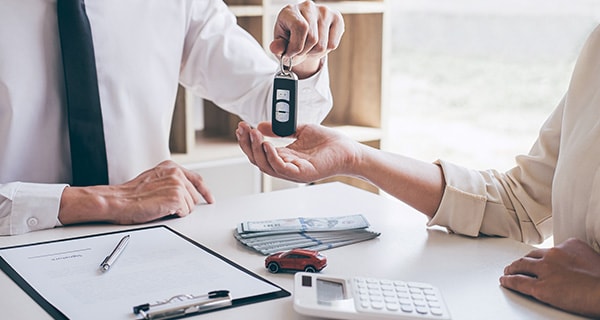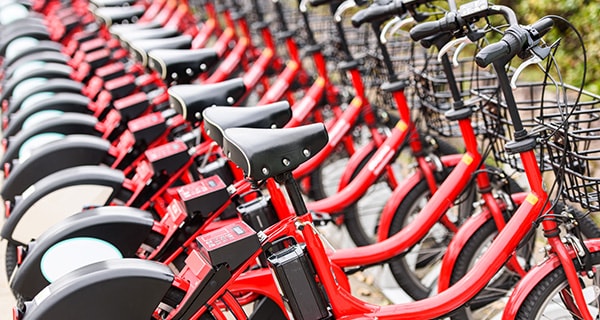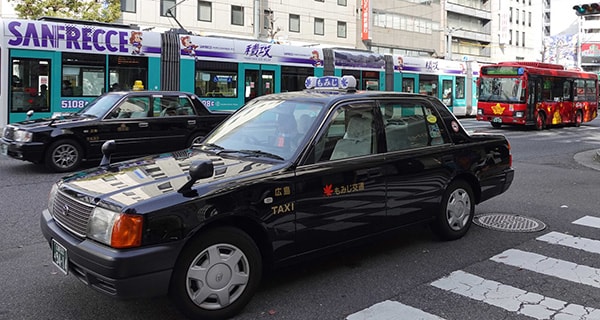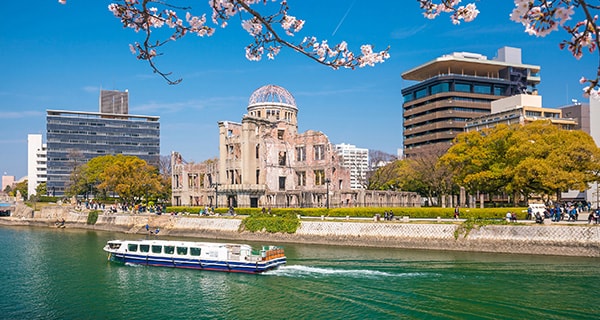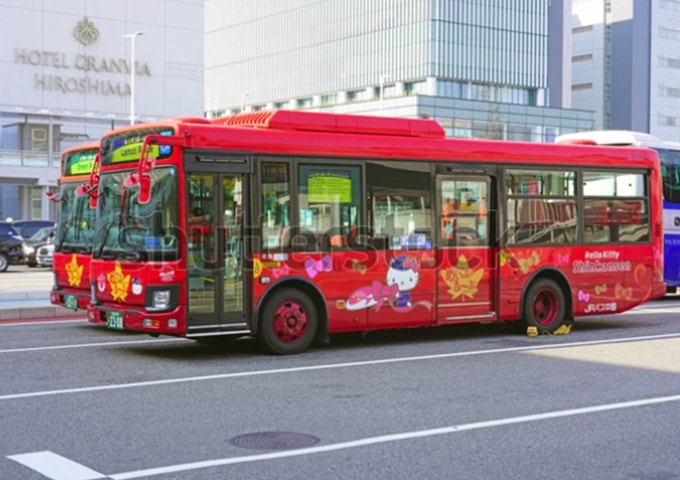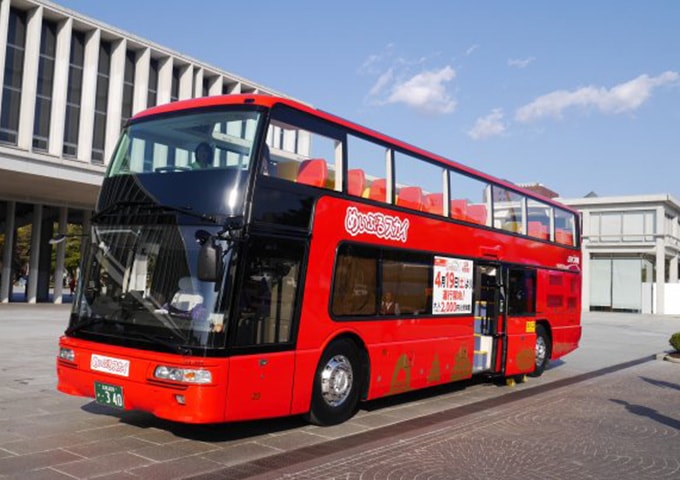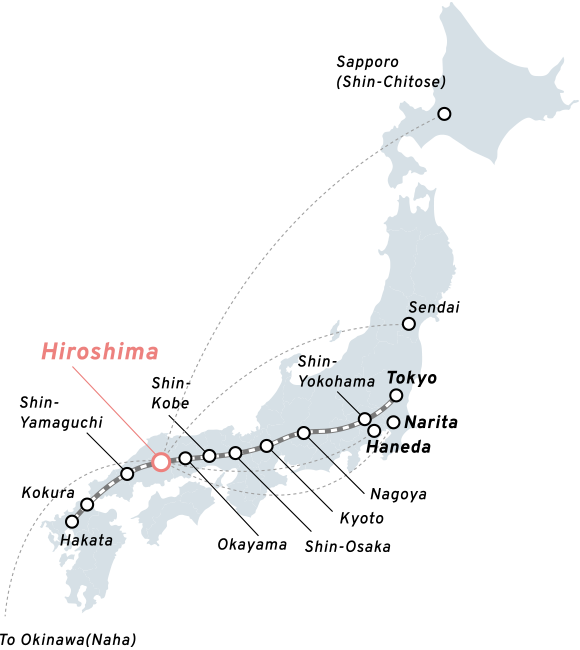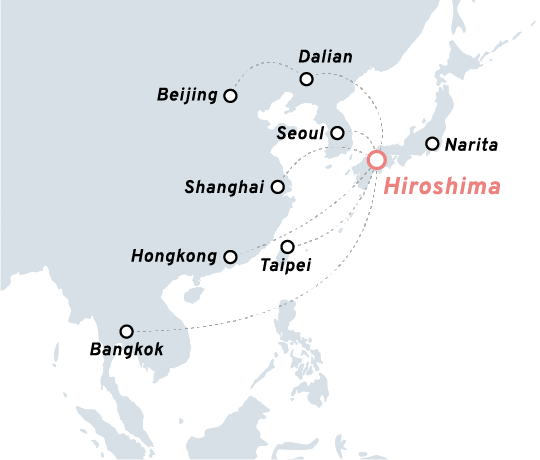Bus
There are many bus routes in Hiroshima Prefecture, and they are familiar to both local residents and tourists.
One of the most convenient is the Hiroshima Meipuru~pu (Maple Loop Bus), which is a sightseeing bus that circles through the center of the city. The Hiroshima Meipuru~pu is a bus that starts at Hiroshima Station and takes you around the city’s sightseeing spots such as Hiroshima Castle and Atomic Bomb Dome.
A one-day pass costs 1,000 yen and a two-day pass costs 1,500 yen. The One-Day Kure Pass, which offers unlimited rides in central Kure, is also popular. The Hiroshima Tabi Pass and the One Day Kure Pass are also available as digital tickets, so you can choose the right option for you.

